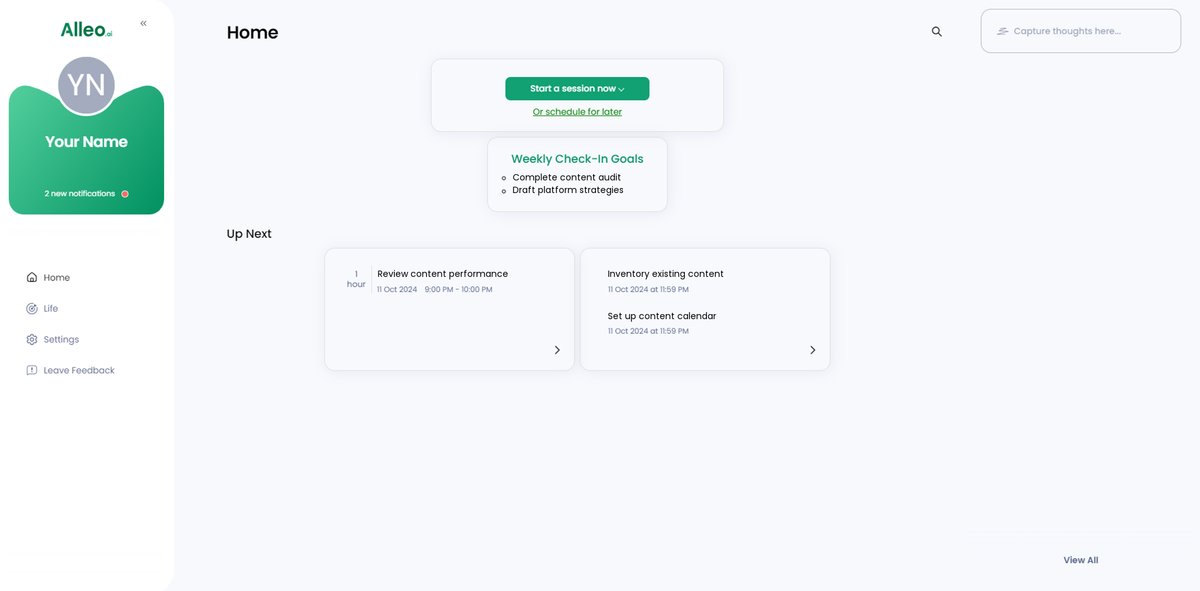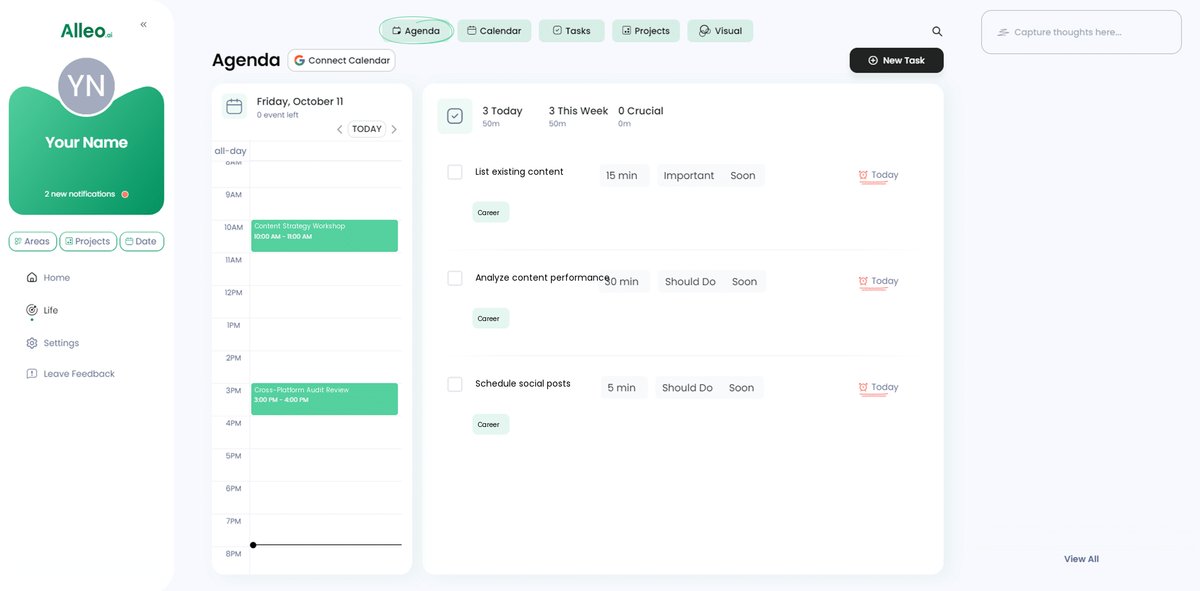3 Proven Methods to Master Cross-Platform Content Strategies for Aspiring Media Professionals
Are you struggling to create effective cross-platform content strategies that work across multiple platforms? Creating effective cross-platform content strategies is crucial for success in today’s digital landscape.
As a life coach, I’ve helped many professionals navigate these challenges. In my experience assisting clients in competitive industries, I often encounter issues related to content marketing across platforms and digital media strategy development.
In this article, you’ll discover practical strategies for crafting cross-platform content. We’ll cover essential steps like:
- Conducting a content audit
- Developing platform-specific strategies for multi-channel content distribution
- Creating a content calendar for social media content planning
Let’s dive in to explore SEO optimization for media professionals and audience targeting on different platforms.

Understanding the Challenges of Cross-Platform Content Strategy
Navigating the complexities of managing content across various platforms can be daunting. Creating effective cross-platform content strategies requires understanding that each platform, from social media and streaming services to podcasts and traditional media, has unique requirements and audience behaviors.
Many clients initially struggle with creating cohesive content that resonates across all channels. The consequences of poor content strategy can be severe, impacting brand visibility, engagement, and ROI. Effective multi-channel content distribution is crucial for success.
I often see marketers overwhelmed by the sheer volume of content they need to manage. This often leads to inconsistent messaging and missed opportunities for engagement. Implementing social media content planning can help alleviate these issues.
Imagine posting high-quality content on Instagram, only to see it fall flat on TikTok. This disparity is a common pain point that underscores the need for platform-specific strategies and content repurposing techniques.
By acknowledging these challenges, you can start to develop a more effective approach to your content strategy, focusing on storytelling across multiple mediums and maintaining brand consistency in cross-platform content.

Overcoming this challenge requires a few key steps when creating effective cross-platform content strategies. Here are the main areas to focus on to make progress in your digital media strategy development:
- Conduct a Multi-Platform Content Audit: Inventory and assess your existing content to identify performance gaps and opportunities for content marketing across platforms.
- Develop Platform-Specific Content Strategies: Tailor your content to leverage each platform’s unique strengths and audience behaviors, focusing on multi-channel content distribution and social media content planning.
- Create a Cross-Platform Content Calendar: Plan, schedule, and monitor your content distribution for consistency and engagement, incorporating storytelling across multiple mediums.
Let’s dive into creating effective cross-platform content strategies!
1: Conduct a multi-platform content audit
A multi-platform content audit is crucial for identifying gaps and opportunities in your strategy for creating effective cross-platform content strategies.
Actionable Steps:
- Inventory existing content: List all content pieces across platforms, including social media content planning, blog articles, videos, and podcasts for multi-channel content distribution.
- Assess content performance: Analyze metrics like engagement, reach, and conversion rates to find high and low-performing content, using analytics for cross-platform performance.
- Identify gaps and opportunities: Compare current content with industry best practices and audience targeting on different platforms to find improvement areas.
Key benefits of a content audit include:
- Improved content quality and relevance for digital media strategy development
- Better understanding of audience preferences for content marketing across platforms
- Identification of content repurposing techniques
Explanation:
Conducting a thorough content audit helps you understand what works and what doesn’t. This step is essential for aligning your content with your audience’s expectations and industry benchmarks, ensuring brand consistency in cross-platform content.
You can explore more about conducting content audits on Coursera.
This foundational step sets the stage for developing effective platform-specific strategies and storytelling across multiple mediums.

2: Develop platform-specific content strategies
Developing platform-specific content strategies is essential to maximize engagement and effectiveness across various channels when creating effective cross-platform content strategies.
Actionable Steps:
- Tailor content to platform strengths: Create guidelines for each platform, such as short-form videos for TikTok and in-depth articles for LinkedIn, focusing on multi-channel content distribution.
- Leverage platform-specific features: Utilize features like Instagram Stories, YouTube playlists, and Facebook Groups to enhance engagement and support social media content planning.
- Align content with audience expectations: Customize content themes and styles based on audience demographics and interests for each platform, improving audience targeting on different platforms.
Explanation:
These steps help ensure your content resonates with the unique audience of each platform. Tailoring content to platform strengths and leveraging specific features can significantly boost engagement in content marketing across platforms.
For instance, using features like Instagram Stories can increase interaction. Learn more about platform-specific strategies on Coursera.
This approach sets the stage for creating a cohesive and impactful cross-platform content strategy, focusing on storytelling across multiple mediums and maintaining brand consistency in cross-platform content.
3: Create a cross-platform content calendar
Creating a cross-platform content calendar is crucial for ensuring consistency and engagement across various channels when developing effective cross-platform content strategies.
Actionable Steps:
- Plan content themes and topics: Develop a monthly or quarterly content calendar with themes and topics that resonate across platforms, focusing on multi-channel content distribution.
- Schedule content distribution: Determine the best times to post on each platform based on audience activity and engagement metrics, considering social media content planning.
- Monitor and adjust strategy: Regularly review content performance and make adjustments to the calendar as needed, utilizing analytics for cross-platform performance.
Key elements of an effective content calendar for creating effective cross-platform content strategies:
- Clear content themes and topics
- Assigned responsibilities for content creation
- Flexible scheduling to accommodate trends
Explanation:
These steps matter because they help you stay organized, ensuring your content is timely and relevant. By planning and scheduling, you can maintain a consistent presence across platforms, supporting your digital media strategy development.
Monitoring and adjusting your strategy allow for continuous improvement. For more insights on content scheduling, visit this article.
This approach sets you up for sustained success in your cross-platform content strategy, including storytelling across multiple mediums and maintaining brand consistency in cross-platform content.

Partner with Alleo on Your Cross-Platform Content Strategy
We’ve explored the challenges of creating effective cross-platform content strategies, how solving them can benefit your brand, and the steps to achieve it. But did you know you can work directly with Alleo to make this journey easier and faster?
Alleo, the AI life coach and organizer, provides affordable, tailored coaching support for content marketing across platforms. With Alleo, you’ll receive full coaching sessions like any human coach to help develop your digital media strategy.
Plus, there’s a free 14-day trial with no credit card required.
Getting Started:
- Set up an account: Visit Alleo’s website and create your account.
- Create a personalized plan: Answer a few questions to tailor your multi-channel content distribution plan.
- Work with Alleo’s coach: Receive actionable advice and guidance on improving your social media content planning and SEO optimization for media professionals.
- Follow-up and accountability: Alleo will check your progress, handle changes, and keep you accountable via text and push notifications, ensuring brand consistency in cross-platform content.
Ready to get started for free?
Let me show you how!
Step 1: Log In or Create Your Account
To get started with Alleo and improve your cross-platform content strategy, log in to your account or create a new one to begin your free 14-day trial and access personalized coaching support.

Step 2: Choose “Building better habits and routines”
Click on “Building better habits and routines” to focus your coaching on developing consistent content creation practices, which will help you maintain an effective cross-platform content strategy and overcome the challenges of managing multiple channels.

Step 3: Select “Career” as Your Focus Area
Choose “Career” as your focus area to align Alleo’s coaching with your content strategy goals, helping you develop professional skills and strategies for effective cross-platform content creation and management.

Step 4: Starting a Coaching Session
Begin your journey with Alleo by scheduling an intake session, where you’ll discuss your content strategy goals and create a personalized plan to guide your future coaching sessions.

Step 5: Viewing and Managing Goals After the Session
After your coaching session with Alleo, check the app’s home page to view and manage the content strategy goals you discussed, allowing you to track your progress and stay accountable to your cross-platform content plan.

Step 6: Adding Events to Your Calendar or App
Use Alleo’s calendar and task features to add your content strategy events, deadlines, and milestones, allowing you to easily track your progress and stay accountable as you implement your cross-platform content plan.

Take Control of Your Cross-Platform Content Strategy Today
As we’ve seen, creating effective cross-platform content strategies can be challenging but incredibly rewarding. By taking the time to conduct a content audit, develop platform-specific strategies, and create a detailed content calendar, you can significantly boost your brand’s visibility and engagement across multiple mediums.
Remember, you’re not alone in this journey. I know how overwhelming managing content marketing across platforms can be.
That’s where Alleo comes in. With Alleo, you can streamline your digital media strategy development and stay on track with your goals for multi-channel content distribution.
So, why wait? Start your free 14-day trial with Alleo today and take your cross-platform content strategy to the next level.
Let’s make your content work for you across all platforms!